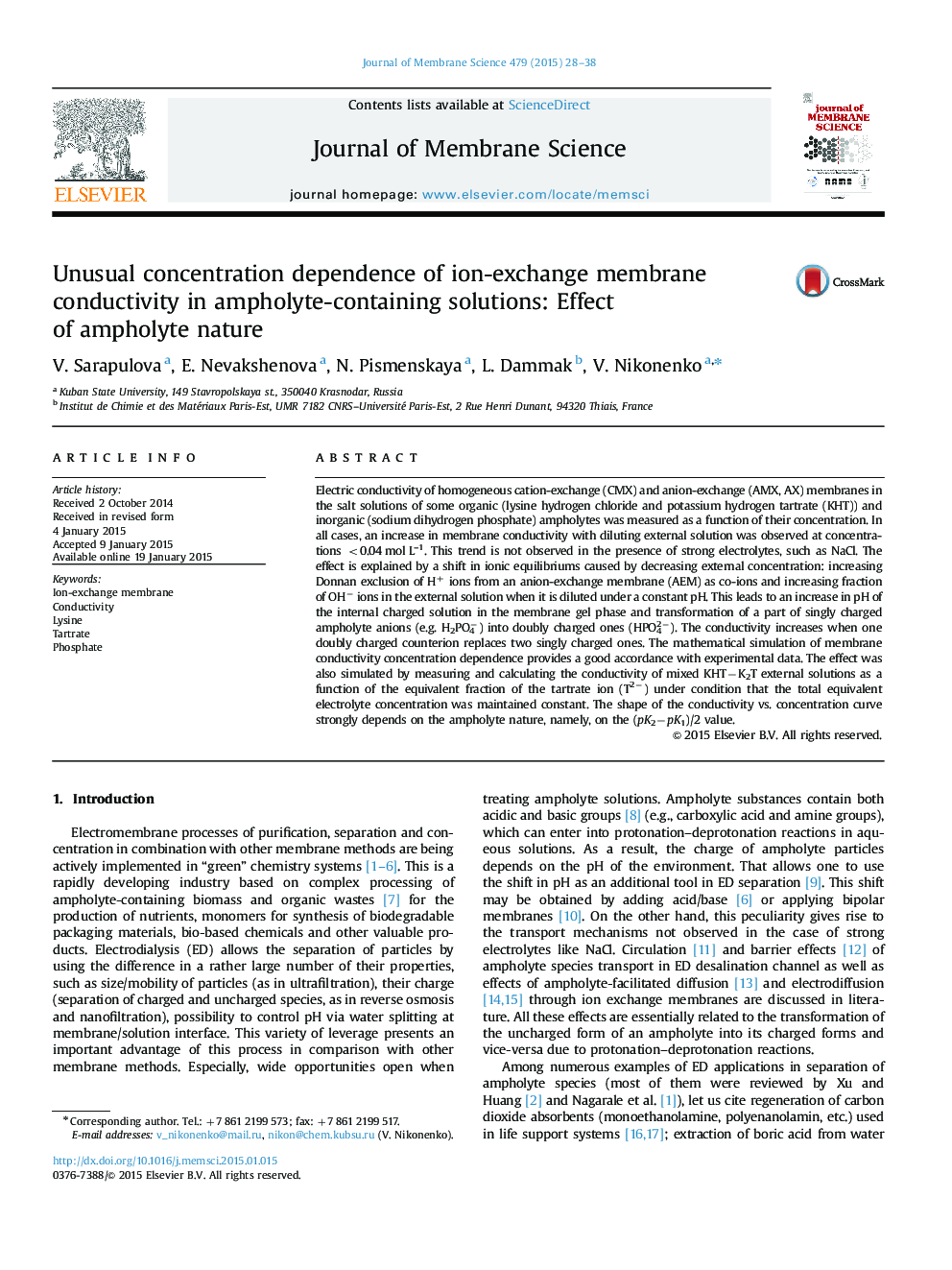| Article ID | Journal | Published Year | Pages | File Type |
|---|---|---|---|---|
| 633108 | Journal of Membrane Science | 2015 | 11 Pages |
•The membrane conductivity increases in the range of dilute ampholyte solution concentration.•The increase in conductivity is due to increasing concentration of the doubly charged ampholyte counterion in the membrane.•The shape of the conductivity vs. concentration curve depends on pK2−pK1.
Electric conductivity of homogeneous cation-exchange (CMX) and anion-exchange (AMX, AX) membranes in the salt solutions of some organic (lysine hydrogen chloride and potassium hydrogen tartrate (KHT)) and inorganic (sodium dihydrogen phosphate) ampholytes was measured as a function of their concentration. In all cases, an increase in membrane conductivity with diluting external solution was observed at concentrations <0.04 mol L–1. This trend is not observed in the presence of strong electrolytes, such as NaCl. The effect is explained by a shift in ionic equilibriums caused by decreasing external concentration: increasing Donnan exclusion of H+ ions from an anion-exchange membrane (AEM) as co-ions and increasing fraction of OH− ions in the external solution when it is diluted under a constant pH. This leads to an increase in pH of the internal charged solution in the membrane gel phase and transformation of a part of singly charged ampholyte anions (e.g. H2PO4−) into doubly charged ones (HPO42−). The conductivity increases when one doubly charged counterion replaces two singly charged ones. The mathematical simulation of membrane conductivity concentration dependence provides a good accordance with experimental data. The effect was also simulated by measuring and calculating the conductivity of mixed KHT−K2T external solutions as a function of the equivalent fraction of the tartrate ion (T2−) under condition that the total equivalent electrolyte concentration was maintained constant. The shape of the conductivity vs. concentration curve strongly depends on the ampholyte nature, namely, on the (pK2−pK1)/2 value.
Graphical abstractFigure optionsDownload full-size imageDownload high-quality image (111 K)Download as PowerPoint slide
